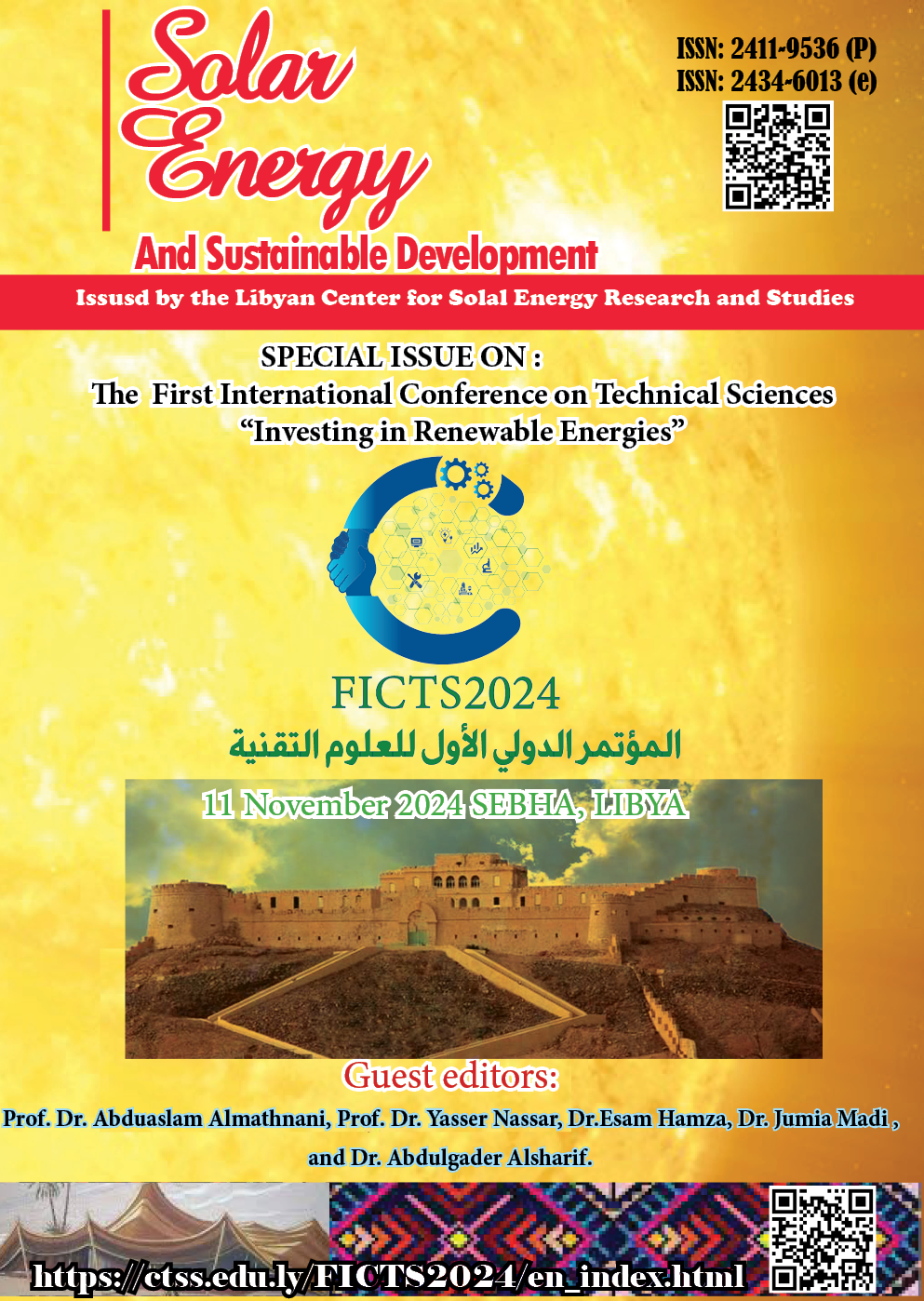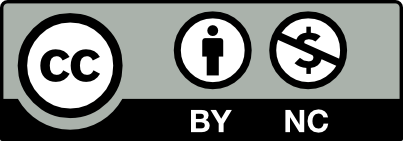Study the Influences of Both (NaOH and KOH) at Different Electrolyte Concentrations and Times on Hydrogen Production via Electrolysis Process
DOI:
https://doi.org/10.51646/jsesd.v14iFICTS-2024.444Keywords:
Hydrogen, Electrolysis, NaOH, KOH, Efficiency.Abstract
There are various ways to reduce emissions harmful to the environment, including carbon dioxide gas produced from different industries that depend on fossil fuels, which is considered a non-renewable energy sources that will end one day. Recently, there has been a strong focus on finding alternative and renewable ways to produce energy. One of these ways is to use hydrogen as a resource for many applications, including the most important electricity generation. This study deals with the mechanism of hydrogen production through the electrolysis of water, which was represented by the use of a model of the electrolysis cell, through which factors affecting the amount of hydrogen produced such as time, concentration, and electrolyte type. Two different catalysts (electrolyte type) were employed in this study, namely sodium hydroxide NaOH and potassium hydroxide KOH, they were used as electrolysis in order to evaluate the levels of hydrogen production. Experimental results showed that the potassium hydroxide catalyst was better than the sodium hydroxide, due to the activity of potassium ion in the electrolyte medium, which plays an important role in the dissolution process and hydrogen production. The best amount of hydrogen gas production was (140 ml) at 3 minutes, 4 amperes, 10 volts, and a concentration of 5 g/L of KOH. Faradaic efficiency was used to evaluate hydrogen production in both electrolysis mediums. The experimental results showed that the highest Faraday efficiency was 0.179% at a concentration of 5 g/L.
Downloads
Metrics
References
Alexandra M Oliveira, Rebecca R Beswick and Yushan Yan , 2021 “A green hydrogen economy for a renewable energy society” Current Opinion in Chemical Engineering Volume 33, 100701, https://doi.org/10.1016/j.coche.2021.100701 DOI: https://doi.org/10.1016/j.coche.2021.100701
Energy Solutions 101 “ the advantages of hydrogen fuel and its limitations” / April 25, 2024 https://www.fastechus.com/
A. klerk, fischer-tropsch refining. john wiley & sons CA: University of Alberta, (2012), vol 246. DOI: https://doi.org/10.1002/9783527635603
Mostafa El-Shafie, 2023 “Hydrogen production by water electrolysis technologies”: A review, Results in Engineering, Volume 20, 2023, 101426, ISSN 2590-1230, https://doi.org/10.1016/j.rineng.2023.101426. DOI: https://doi.org/10.1016/j.rineng.2023.101426
Giorgi, L., Leccese, F. (2013). Fuel cells: Technologies and applications. The Open Fuel Cells Journal, 6(1). [DOI: 10.2174/1875932720130719001] DOI: https://doi.org/10.2174/1875932720130719001
Gielen, D., Taibi, E., & Miranda, R. (2019). Hydrogen: A Reviewable Energy Perspective: Report prepared for the 2nd Hydrogen Energy Ministerial Meeting in Tokyo, Japan.
Winter, C. J. (2009). Hydrogen energy—Abundant, efficient, clean: A debate over the energy-system-of-change. International journal of hydrogen energy, 34(14), S1-S52. DOI: https://doi.org/10.1016/j.ijhydene.2009.05.063
Sazali, N. (2020). Emerging technologies by hydrogen: A review. International Journal of Hydrogen Energy, 45(38), 18753-18771. DOI: https://doi.org/10.1016/j.ijhydene.2020.05.021
Abbasi, T., & Abbasi, S. A. (2011). ‘Renewable’hydrogen: prospects and challenges. Renewable and Sustainable Energy Reviews, 15(6), 3034-3040. DOI: https://doi.org/10.1016/j.rser.2011.02.026
Chao Wang, Yongqiang Li, Junmin Wan, Yi Hu, Analysis of CO2 emissions reduction via by-product hydrogen, International Journal of Hydrogen Energy, 2024, 67, 942-948,
https://doi.org/10.1016/j.ijhydene.2024.02.138 DOI: https://doi.org/10.1016/j.ijhydene.2024.02.138
Gebremariam, G.K.; Jovanović, A.Z.; Pašti, I.A. The Effect of Electrolytes on the Kinetics of the Hydrogen Evolution Reaction. Hydrogen 2023, 4,776-806. https://doi.org/10.3390/hydrogen4040049 DOI: https://doi.org/10.3390/hydrogen4040049
Chen, K.; Xu, B.; Shen, L.; Shen, D.; Li, M.; Guo, L.-H. Functions and performance of ionic liquids in enhancing electrocatalytic hydrogen evolution reactions: A comprehensive review. RSC Adv. 2022, 12, 19452–19469. DOI: https://doi.org/10.1039/D2RA02547G
francesca mennilli, lingkang jin, mosè rossi, gabriele comodi, assessment of a naoh-based alkaline electrolyser’s performance: system modelling and operating parameters optimisation, international journal of hydrogen energy, volume 85,2024, pages 625-634, issn 0360-3199, https://doi.org/10.1016/j.ijhydene.2024.08.175. DOI: https://doi.org/10.1016/j.ijhydene.2024.08.175
biswajit mandal1 , amalesh sirkar2 , parameswar de3 , sunil baran kuila, studies on the effect of electrolyte concentration on alkaline electrolysis and ion exchange membrane water splitting for production of hydrogen, ijret: international journal of research in engineering and technology eissn: 2319-1163 | pissn: 2321-7308
Weber, D.J.; Janssen, M.; Oezaslan, M. Effect of Monovalent Cations on the HOR/HER Activity for Pt in Alkaline Environment. J. Electrochem. Soc. 2019, 166, F66–F73. DOI: https://doi.org/10.1149/2.0301902jes
Guha, A.; Kaley, N.M.; Mondal, J.; Narayanan, T.N. Engineering the hydrogen evolution reaction of transition metals: Effect of Li ions. J. Mater. Chem. A 2020, 8, 15795–15808. DOI: https://doi.org/10.1039/C9TA12926J
Zhang, R.; Pearce, P.E.; Duan, Y.; Dubouis, N.; Marchandier, T.; Grimaud, A. Importance of Water Structure and Catalyst–Electrolyte Interface on the Design of Water Splitting Catalysts. Chem. Mater. 2019, 31, 8248–8259. DOI: https://doi.org/10.1021/acs.chemmater.9b02318
Völkl, J., & Alefeld, G. (1978). Diffusion of hydrogen in metals. Hydrogen in metals I, 321-348. DOI: https://doi.org/10.1007/3540087052_51
Weiss, B., Stickler, R. (1972). ''Phase instabilities during high temperature exposure of 316 austenitic stainless steel. Metallurgical and Materials Transactions B'', 3(4), 851-866. DOI: https://doi.org/10.1007/BF02647659 DOI: https://doi.org/10.1007/BF02647659
Solomon, N., Solomon, I. (2017). ''Effect of deformation-induced phase transformation on AISI 316 stainless steel corrosion resistance. Engineering Failure Analysis''. 79, 865-875. https://doi.org/10.1016/j.engfailanal.2017.05.031 DOI: https://doi.org/10.1016/j.engfailanal.2017.05.031
Zohuri, B., & Zohuri, B. (2019). The chemical element hydrogen. Hydrogen energy: challenges and solutions for a cleaner future, 1-35. DOI: https://doi.org/10.1007/978-3-319-93461-7_1
DIOGO M. F. SANTOS, CÉSAR A. C. SEQUEIRA AND JOSÉ L. FIGUEIREDO, 2013 “HYDROGEN PRODUCTION BY ALKALINE WATER ELECTROLYSIS” QUÍM. NOVA 36 (8) • HTTPS://DOI.ORG/10.1590/S0100-40422013000800017. DOI: https://doi.org/10.1590/S0100-40422013000800017
Buddhi, D. , Kothari, R. and Sawhney, R. L.(2006) 'An Experimental Study on the Effect of Electrolytic Concentration on the Rate of Hydrogen Production', International Journal of Green Energy, 3: 4, 381 — 395. https://doi.org/10.1080/01971520600873343 DOI: https://doi.org/10.1080/01971520600873343
Porciúncula, C. B., Marcilio, N. R., Tessaro, I. C., & Gerchmann, M. (2012). Production of hydrogen in the reaction between aluminum and water in the presence of NaOH and KOH. Brazilian Journal of Chemical Engineering, 29, 337-348.https://doi.org/10.1590/S0104-66322012000200014 DOI: https://doi.org/10.1590/S0104-66322012000200014
Ghavam, S., Vahdati, M., Wilson, I. A., & Styring, P. (2021). Sustainable ammonia production processes. Frontiers in Energy Research, 34. doi: 10.3389/fenrg.2021.580808. DOI: https://doi.org/10.3389/fenrg.2021.580808
Saleet, H., Abdallah, S., & Yousef, E. (2017). The effect of electrical variables on hydrogen and oxygen production using a water electrolyzing system. International Journal of Applied Engineering Research, 12(13), 3730-3739.
Yang, C., Rousse, G., Louise Svane, K. et al. (2020). “Cation insertion to break the activity/stability relationship for highly active oxygen evolution reaction catalyst”. Nat Commun 11, 1378 ,https://doi.org/10.1038/s41467-020-15231-x DOI: https://doi.org/10.1038/s41467-020-15231-x
Zamanizadeh, H. R., Sunde, S., Pollet, B. G., & Seland, F. (2022). Tailoring the oxide surface composition of stainless steel for improved OER performance in alkaline water electrolysis. Electrochimica Acta, 140561. https://doi.org/10.1016/j.electacta.2022.140561 DOI: https://doi.org/10.1016/j.electacta.2022.140561
Florian Moureaux, Philippe Stevens, Gwenaëlle Toussaint, Marian Chatenet., 2019 “Timely-activated 316L stainless steel: A low cost, durable and active electrode for oxygen evolution reaction in concentrated alkaline environments”. Applied Catalysis B: Environmental, 258, pp.117963. ff10.1016/j.apcatb.2019.117963ff. ffhal-02426817. DOI: https://doi.org/10.1016/j.apcatb.2019.117963
Verma S, Lu X, Ma S, Masel RI, Kenis PJA., 2015 “ The effect of electrolyte composition on the electroreduction of CO2 to CO on Ag based gas diffusion electrodes”. Phys Chem Chem Phys;18:7075–84. doi: 10.1039/C5CP05665A. DOI: https://doi.org/10.1039/C5CP05665A
Rosen, B. A., Salehi-Khojin, A., Thorson, M. R., Zhu, W., Whipple, D. T., Kenis, P. J., & Masel, R. I. (2011). Ionic liquid–mediated selective conversion of CO2 to CO at low overpotentials. Science, 334(6056), 643-644.doi: science.1209786/DC1. DOI: https://doi.org/10.1126/science.1209786
Sen, S., Liu, D., & Palmore, G. T. R. (2014). Electrochemical reduction of CO2 at copper nanofoams. Acs Catalysis, 4(9), 3091-3095. doi: 10.1021/cs500522g DOI: https://doi.org/10.1021/cs500522g
Amar, I. A., & Ahwidi, M. M. (2021). Electrocatalytic activity of cofe1. 9Mo0. 1O4-Ce0. 8Gd0. 18Ca0. 02O2-δ composite cathode for ammonia synthesis from water and nitrogen. World Journal of Engineering. https://doi.org/10.1108/WJE-07-2020-0270. DOI: https://doi.org/10.1108/WJE-07-2020-0270
Downloads
Published
How to Cite
Issue
Section
License
Copyright (c) 2025 Solar Energy and Sustainable Development Journal

This work is licensed under a Creative Commons Attribution-NonCommercial 4.0 International License.














